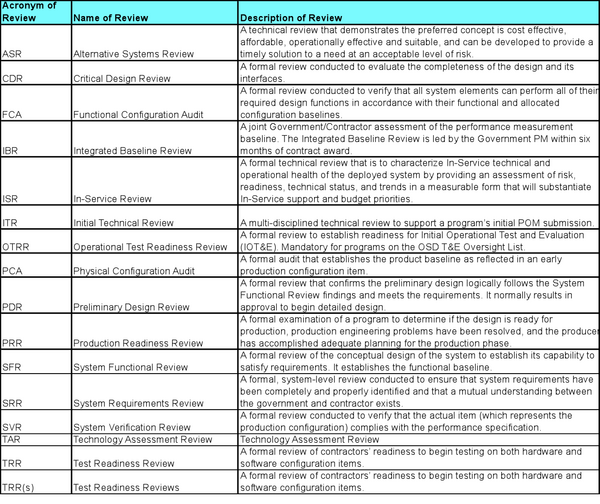Assessment and Control
The purpose of Systems Engineering Assessment and Control (SEAC) is to provide adequate visibility into the project’s actual technical progress and risks with respect to the technical plans (i.e., SEMP and subordinate plans). The visibility allows the project team to take timely preventive action when trends are recognized or corrective action when performance deviates beyond established thresholds or expected values. SEAC includes preparing for and conducting reviews and audits to monitor performance. The results of the reviews and measurement analyses are used to identify and record findings/discrepancies and may lead to causal analysis and corrective/preventive action plans. Action plans are implemented, tracked, and monitored to closure. (NASA 2007, Section 6.7) (SEG-ITS, 2009, Section 3.9.3, 3.9.10) (SEI, 1995, PA11) (16326, 2010, Clause 6.2) (CMMI Product Team, 2006)
SEAC includes determination of appropriate handling strategies and actions for findings and/or discrepancies that are uncovered in the enterprise, infrastructure, or life cycle activities associated with the project, and for initiating the identified actions or replanning. Analysis of the causes of the findings/discrepancies aid in the determination of appropriate handling strategies. Implementation of the approved preventive, corrective, or improvement actions is taken to ensure satisfactory completion of the project within planned technical, schedule, and cost objectives. Potential action plans for findings and/or discrepancies are reviewed in the context of the overall set of actions and priorities in order to optimize the benefits to the project and/or organization. Interrelated items are analyzed together to obtain a consistent and cost effective resolution.
8.3.5 Practical Considerations
8.3.5.1 Pitfalls
Some of the key pitfalls encountered in planning and performing SE Assessment and Control are:
• Since the assessment and control activities are highly dependent on insightful measurement information, it is usually ineffective to proceed independent of the measurement efforts.
8.3.5.2 Good Practices
Some good practices gathered from the references are:
• Provide independent (from customer) assessment and recommendations on resources, schedule, technical status, and risk based on experience and trend analysis.
• Document and communicate status findings and recommendations to stakeholders.
• Ensure that action items and action-item status, as well as other key status items, are visible to all project participants.
• When performing root cause analysis, consider root cause and resolution data documented in previous related findings/discrepancies.
• Plan and perform Assessment and Control concurrently with the activities for Measurement and Risk Management.
• Additional good practices can be found in (2010, Clause 6.2), (SEG-ITS, 2009, Sections 3.9.3 and 3.9.10), (INCOSE, 2010, Section 5.2.1.5), (NASA, 2007, Section 6.7).
